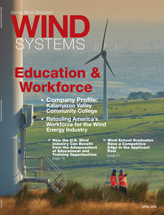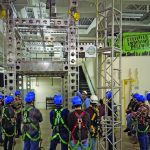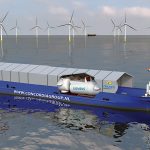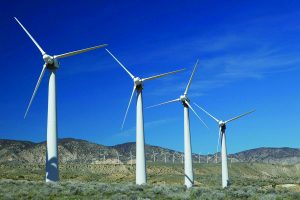Established in 1966, Kalamazoo Valley Community College (KVCC) is a comprehensive, fully accredited public two-year college with approximately 13,000 students currently enrolled. It offers certificate programs in more than 20 areas of study and associate degrees in 25 others. In addition to associate degrees and certificate programs in business, health care, human and public service, technical occupations, and industry-specific fields, the college also provides a quality experience for students preparing to transfer to four-year institutions following graduation.
Creating an educated workforce skilled to meet the demands of a changing economy is the focus at the Groves Center on KVCC’s Groves Campus, one of the college’s four campuses that was originally opened in 2001 as one of 18 Michigan technical education centers (M-TEC) facilities across the state of Michigan. The Groves Center was financed by a $5 million grant from the Michigan Economic Development Corporation in addition to $6 million in matching funds provided by area companies and foundations. It offers a variety of training programs for those looking to embark on a new career path, including fast-track training academies that are designed with input from local employers. One of its most outstanding career programs is the Wind Turbine Technician Academy, which was initially launched in 2009 and has quickly earned a reputation as one of the premier training sources for wind industry professionals. Other career academies offered at the Groves Center include Mechatronic Technician Academy and the CNC Operator Academy, as well as customized workforce development training for area employers.

The Wind Turbine Technician Academy at KVCC is a comprehensive 24-week training program designed to teach students the skills necessary to work as wind turbine technicians. Upon successful completion of the program, students typically enjoy a high placement rate within the wind energy industry. The program meets from 8:00 a.m. to 4:30 p.m. Monday through Friday. During scheduled service trips, students can expect to work 10-12 hours per day to complete the scheduled tasks. Due to the rigorous nature of the program, it is recommended that students not work while they are enrolled in the academy.
“We are committed to enriching the lives of our students and communities through quality educational programs and services,” said Benjamin Ash, program coordinator for career academics at KVCC. “For those in the Wind Turbine Technician Academy, we create an environment where students learn by doing. Many times, students’ questions are met with questions from the instructor to help them develop their own thought process to solve a particular problem. As a wind turbine technician, the student will face new challenges every day. More than likely, there won’t be a ‘cookie-cutter’ solution to all of the issues they’ll encounter in the field, so our instructors try to guide the students to their own solution.”
Additionally, the college has educational service contracts with two Michigan-based utility companies giving its Wind Turbine Technician Academy sole responsibility for five utility-grade turbines in the state of Michigan. Students can expect to spend at least two weeks working in the field on these turbines.
KVCC’s wind training program differs from many others like it in the U.S. in that it is competency-based rather than credit-based, meaning that students must demonstrate with 100-percent proficiency that they can complete the tasks necessary to be a wind turbine technician. These competencies are proven by hands-on demonstrations completed in the presence of one of the instructors.
 “Not only do students have to complete the hands-on demonstration, they also have to be able to describe what they are doing and why they are doing it,” Ash said. “They must also be able to answer any questions from the instructor. Many of the competencies build on one another, and if an instructor feels that a student is no longer competent in a particular task, they may strip the student of that competency until they are able to demonstrate it correctly.”
“Not only do students have to complete the hands-on demonstration, they also have to be able to describe what they are doing and why they are doing it,” Ash said. “They must also be able to answer any questions from the instructor. Many of the competencies build on one another, and if an instructor feels that a student is no longer competent in a particular task, they may strip the student of that competency until they are able to demonstrate it correctly.”
Learning the skills necessary to be successful as a wind turbine technician requires hours of hands-on practice. So, as a general rule, KVCC aims to keep the class time to a minimum, spending approximately 85 percent of their time in the laboratory or in the field.
However, in order for this type of training to be successful, class sizes must remain small. According to Ash, KVCC only accepts a maximum of 12 students into the academy each session, allowing it to maintain an ideal student-to-instructor ratio.
“We currently have two full-time instructors and one part-time instructor, all of whom have been through our program and have worked in the wind industry and worked their way into leadership roles within their respective companies before deciding to come back and teach for KVCC,” Ash said.
Beyond the traditional classroom setting, students in the Wind Turbine Technician Academy have the opportunity to work in the college’s electronics lab and its training lab, which contains two 300-kW turbine nacelles. In addition to the lab work completed on campus, students can also spend time on utility-grade turbines by completing regularly scheduled maintenance and service requests.
According to Ash, graduates of KVCC’s Wind Turbine Technician Academy typically take positions as wind turbine technicians either on a wind farm or as a traveling technician for virtually every major OEM and service and maintenance provider in the U.S. wind industry. The majority of the academy’s graduates have moved to the Washington and Oregon areas and to North and South Dakota, while a handful of others have taken positions in Oklahoma, Nebraska, and Illinois.
 KVCC’s Wind Turbine Technician Academy costs a total of $14,000, which includes all safety gear, tools, books, and laptop computers to use while they are enrolled in the academy. The academy also covers the lodging costs of the students while on the off-campus service trips. Students enrolled in the program may be eligible for Federal Financial Aid, Veteran Education Benefits, Kalamazoo Promise, Michigan Works, and private grants or scholarships.
KVCC’s Wind Turbine Technician Academy costs a total of $14,000, which includes all safety gear, tools, books, and laptop computers to use while they are enrolled in the academy. The academy also covers the lodging costs of the students while on the off-campus service trips. Students enrolled in the program may be eligible for Federal Financial Aid, Veteran Education Benefits, Kalamazoo Promise, Michigan Works, and private grants or scholarships.
According to Ash, there are several key factors that set KVCC’s graduates apart from the pool of wind technicians entering the workforce, the first of which being that the college expects its students to treat the academy like a job from the start of the application process through graduation.
“We require students to apply with an application similar to a job application, provide contact references, and conduct an interview,” Ash said. “Once the student is accepted into the program, they are accountable for tardiness and missing class. If a student does not call and does not show up for class, they may be asked to leave the program. Attendance is recorded throughout the course and will be reported to potential employers if requested. The class schedule also falls in line with a full-time work schedule.”
Additionally, students enrolled in the academy must complete ENSA GWO BST training series, which includes working at heights, First Aid, fire prevention, and manual handling. All work-at-heights training is completed on the college’s 100-foot climbing tower.
KVCC’s wind program has earned both the American Wind Energy Association (AWEA) seal of approval and certification by the Bildungszentrum für Erneuerbare Energien (BZEE) Renewable Energy Education Center. Upon successful completion of a series of written and practical tests, as well as completion of the field service, students receive certification as a service technician for wind turbine engineering through the BZEE.
“Employers appreciate the fact that the students from KVCC’s Wind Turbine Technician Academy complete the ENSA GWO training,” Ash said. “They also like the fact that students are gaining experience on real components and actual field experience all within the 24-week training period.
KVCC runs two academies per year; one typically starts during the first week in January, and the other typically starts the first week in July. Applications are accepted year-round. Anyone who is interested in learning more about KVCC’s Wind Turbine Technician Academy should contact Ash directly at bash@kvcc.edu or (269) 353-1560.
For more information, go to www.kvcc.edu/wind.




































